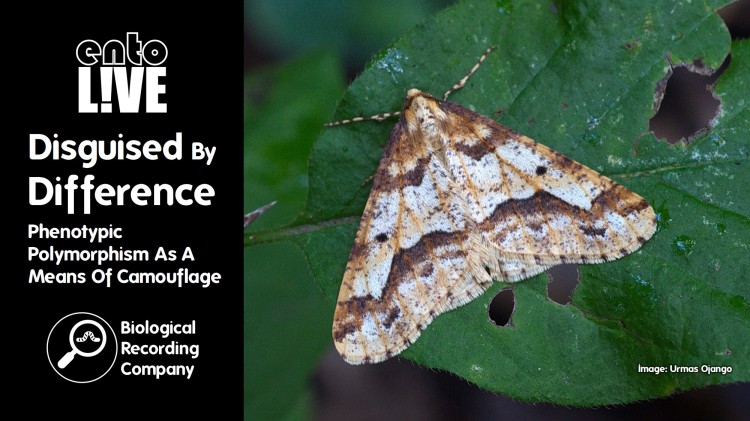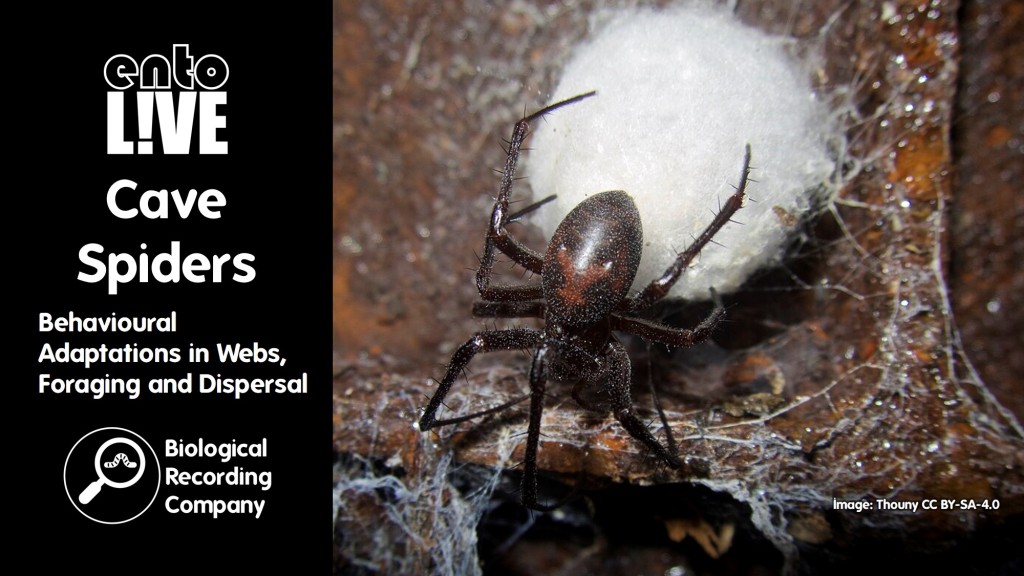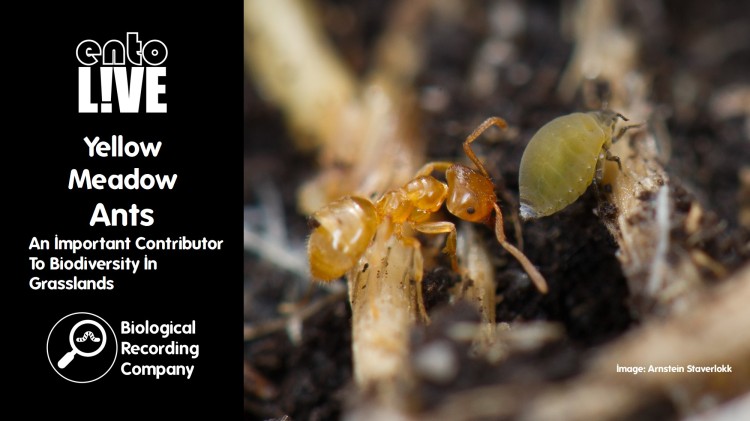The Noble Jewel-wasp (Hedychrum nobile) is a recent colonist to Great Britain, recorded for the first time in 1998. This brood parasite has experienced a rapid range expansion throughout England over the past 20 years, following the distribution of its host. This talk will explore how climate change, habitat availability and parasite-host relationships might influence the range expansion of this species and discuss the fascinating ecology and morphology of one of Britain’s most beautiful insects.
Aaron Bhambra is a PhD student in the Geography, Earth and Environmental Science department at the University of Birmingham. His specialism is with flower-visiting insects, primarily solitary bees and wasps. His current research investigates the impacts of habitat fragmentation on heathland pollinator assemblages.
Q&A with Aaron Bhambra
- How big are Noble Jewel-wasps?
When measuring wasps we measure from the front of the head to the tip of the abdomen. The wings, legs and antennae are not included in this measurement. Females are larger than the males, and are between 6 mm and 12 mm. Size can also vary by region, with specimens being recorded as larger in London. - How long do Noble Jewel-wasps live?
As Hymenoptera, they metamorphosise and have egg, larvae, pupae and adult life stages. They have an annual life cycle. The larvae will live for just one season and they are active as adults between July and September in Britain. - What do Noble Jewel-wasps feed on?
As a larvae they will feed on a dead weevil. The adults don’t feed in the same way, and they nectar on sugars that they get from plants such as tansy and wildflowers. - Does the Noble Jewel-wasp have any predators?
In continental Europe they will have kleptoparasites that feed on them (such as flies or other wasps). We’re not aware of any such parasites coming over to Britain yet, though we would expect to see this as the species becomes more established here – there’s always a lag between the parasite arriving and the host. - Are brownfield sites of use to this species?
I love brownfield sites! It’s where I’ve done most of my biological recording. Brownfield sites often have a mosaic habitat including bare earth and disturbed soils, providing lost of opportunities for various plants and insects. They are a fantastic habitat for bees and wasps. The sandy gravel areas that you get in these sites can act as a haven for heathland specialists. - Does this species pose a threat to any of our native species?
The truth is that it is too soon to tell. I’ve purposefully not drawn parallels with invasive species, such as the Harlequin Ladybird, as this is not an introduction – it is a natural colonisation where the species has flew across the English Channel due to geographic range expansion. We can expect more of these type of colonisation as our climate changes and gets warmer, with more species making the journey over from continental Europe. It may be that this species has colonised previously and we just aren’t aware as we’ve only been recording insects for a relatively very short time. One thing that is certain, is that it will impact the population of the host as these insects will be attacked by this parasite – which in turn may actually be good for the weevils! - What are the future research goals concerning this species?
There are opportunities to study the autecology of this species , looking more closely at the relationship it has with host species in the genus Cerceris and whether this is influenced by any other environmental factors, such as temperature and local ecology.
Literature References
Bhambra (2023) The range expansion of the Noble Jewel Wasp, Hedychrum nobile (Hymenoptera: Chrysididae), a recent colonist to Great Britain. British Journal of Entomology and Natural History, 36, pp. 161-177.
The full article is available below. Become a British Entomological; & Entomological Natural History Society to receive future editions of the journal: https://www.benhs.org.uk/membership/
- Baldock & Hawkins (2016) Hedychrum nobile (Scopoli): A Jewel-Wasp new to Britain and distinct from Hedychrum niemelai (Linsenmaier) (Hymenoptera : Chrysididae). British Journal of Entomology and Natural History, 29 (4), pp.197-208.
- Falk (2010) The bee and wasp assemblages (Hymenoptera: Aculeata) of some key heathland sites in the West Midlands region: https://www.biodiversitylibrary.org/item/322119#page/114/mode/1up
- Falk & Lane (1999) A Survey of the Insects of Sutton Park. Coventry Museums & Galleries Ecology Unit.
- Falk et al (1996) A Comparative Study of the Invertebrate Assemblages of Three Staffordshire Heathland Sites. Coventry Museums & Galleries Ecology Unit.
- Kimsey & Bohart (1991) The Chrysidid Wasps of the World: https://global.oup.com/academic/product/chrysidid-wasps-of-the-world-9780198540106
- Linsenmaier (1959) Revision der Familie Chrysididae (Hymenoptera) mit besonderer Brücksichtigung der europäischen Spezies. Mitteilungen der Schweizerischen Entomologischen Gesellschaft 32: 1–232.
- Paukkunen et al (2015) An illustrated key to the cuckoo wasps (Hymenoptera, Chrysididae) of the Nordic and Baltic countries, with description of a new species: https://doi.org/10.3897/zookeys.548.6164
- Paukkunen et al (2014) Faunistic review of the cuckoo wasps of Fennoscandia, Denmark and the Baltic countries (Hymenoptera: Chrysididae): https://mapress.com/zt/article/view/zootaxa.3864.1.1
Further Info
- BWARS Submitting Records : https://bwars.com/content/submitting-your-records
- Hedychrum nobile BWARS Species Account : https://bwars.com/wasp/chrysididae/elampinae/hedychrum-nobile
- Hedychrum niemelai BWARS Species Account : https://bwars.com/wasp/chrysididae/elampinae/hedychrum-niemelai
- Hedychrum nobile Falk Flikr : https://www.flickr.com/photos/63075200@N07/albums/72157669257562546/
- European Atlas of Bees Red List : https://portals.iucn.org/library/sites/library/files/documents/RL-4-019.pdf
entoLIVE
- Upcoming entoLIVE webinars: https://www.eventbrite.com/cc/entolive-webinars-74679
- If you’d like to donate to the entoLIVE programme, you can do so through the GoFundMe campaign: https://gofund.me/a699e0df
- Subscribe to the Biological Recording Company YouTube channel: https://www.youtube.com/@biologicalrecordingcompany
entoLIVE is delivered by the Biological Recording Company, British Entomological & Natural History Society and Royal Entomological Society, with support from Buglife, Field Studies Council and National Biodiversity Network Trust.
- Find out about more about the British Entomological & Natural History Society: https://www.benhs.org.uk/
- Check out the Royal Entomological Society‘s NEW £15 Associate Membership: https://www.royensoc.co.uk/shop/membership-and-fellowship/associate-member/
- Discover adult, family and junior membership options with the Amateur Entomologists’ Society: https://www.amentsoc.org/membership/
- Explore upcoming events and training opportunities from the Biological Recording Company: https://www.eventbrite.co.uk/o/the-biological-recording-company-35982868173











